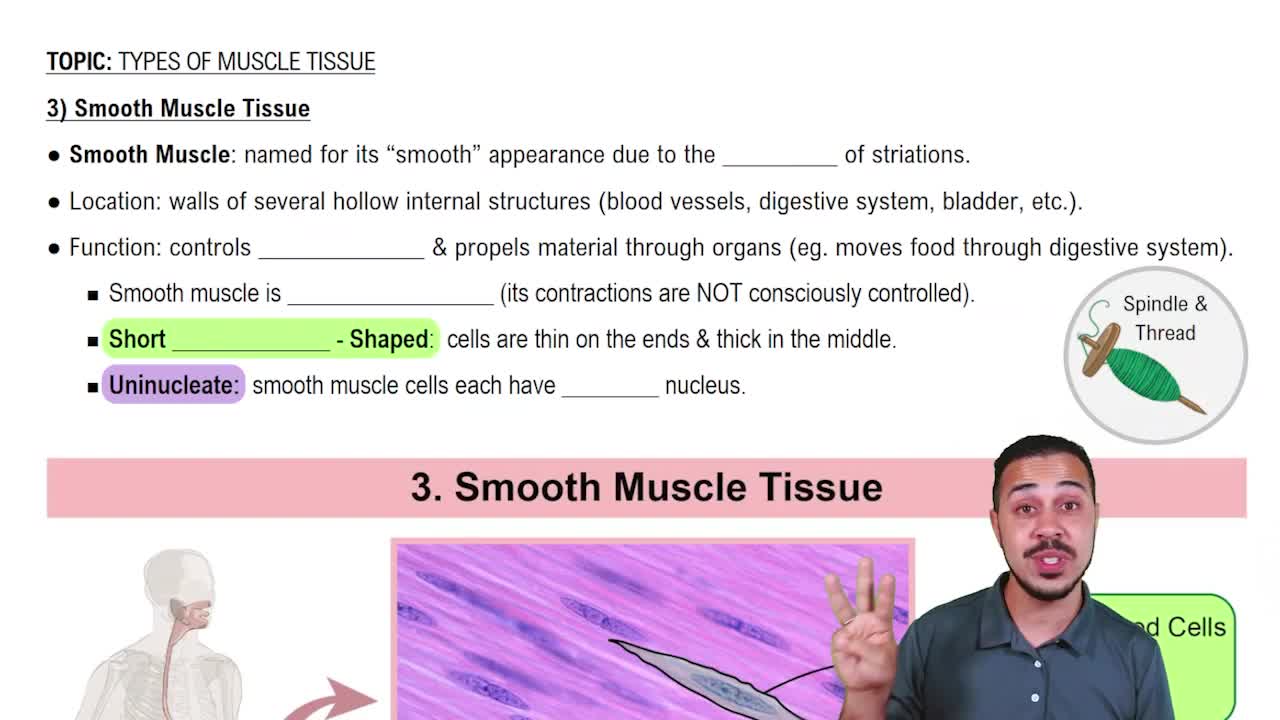Would you expect to find larger motor units in the postural muscles of the back or the muscles of the hand? Explain your answer.
 Erin C. Amerman 2nd Edition
Erin C. Amerman 2nd Edition Ch. 11 Introduction to the Nervous System and Nervous Tissue
Ch. 11 Introduction to the Nervous System and Nervous Tissue Problem 10.4a
Problem 10.4aExplain why cardiac muscle cells and some smooth muscle cells will continue to contract even when their nerve supply has been removed
 Verified step by step guidance
Verified step by step guidance
Verified video answer for a similar problem:
Key Concepts
Myogenic Activity

Calcium Ion Role in Muscle Contraction

Autonomic Regulation of Smooth Muscle

A hypothetical poison blocks K+ leak channels. How would this affect the resting membrane potential of skeletal muscle fibers? Explain your reasoning.
Mark the following statements as true or false. If a statement is false, correct it to make a true statement.
a. The resting membrane potential refers to the voltage difference across the membranes of excitable cells at rest.
Mark the following statements as true or false. If a statement is false, correct it to make a true statement.
b. The concentration of Na+ is highest in the cytosol, and the concentration of K+ is highest in the extracellular fluid.
Mark the following statements as true or false. If a statement is false, correct it to make a true statement.
c. The Na+/K+ pumps and gated channels maintain the Na+ and K+ gradients necessary for action potentials to occur.